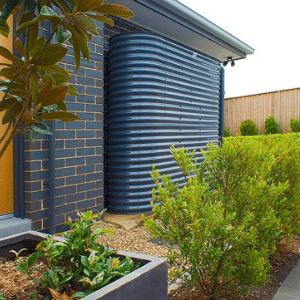Slimline Water Tanks: Trendy and Practical for Modern Residences
Slimline Water Tanks: Trendy and Practical for Modern Residences
Blog Article
Recognizing the Relevance of Rainwater Containers in Drought-Prone Regions for Water Protection
In regions vulnerable to prolonged droughts, the duty of rain tanks in reinforcing water security is a subject of growing value. Rainwater containers serve as an essential device in minimizing the influence of water lacks by supplying a lasting source of water for different needs.
Advantages of Rain Storage Tanks
Using rainwater containers uses a sustainable solution for enhancing supply of water and enhancing water safety in property and industrial setups. One of the main advantages of rain tanks is their capability to minimize dependency on mains water system. By catching and storing rainwater that drops on roofs, this alternative resource can be utilized for various non-potable purposes such as irrigation, flushing toilets, and cleaning clothes. This not just conserves cured alcohol consumption water however likewise lowers water bills for customers.

Rainwater Harvesting Methods
Rain harvesting strategies incorporate a variety of approaches developed to successfully collect and save rainwater for various purposes, adding to water preservation and sustainability. One typical technique is the installation of rooftop catchment systems, where rain is collected from the roofing of a building and routed to a tank. This method is reasonably straightforward and affordable. Another preferred strategy is the use of above-ground or underground tank to save rainwater for later usage. These storage tanks come in various dimensions and products to match various needs and can be connected to the existing pipes system for very easy access.

Moreover, rain yards and absorptive sidewalks are innovative methods that involve landscaping or paving surface areas in a manner that permits rainwater to percolate right into the ground, restoring groundwater books. In addition, shape farming and terracing are farming techniques that aid record rainwater and avoid dirt disintegration in sloping surface. By executing these varied rain harvesting methods, areas can enhance water safety and durability in drought-prone regions while promoting sustainable water administration methods.
Value of Water Security
Guaranteeing trustworthy accessibility to tidy and adequate water resources is paramount for sustaining human wellness, financial advancement, and ecological wellness. Water safety and security is a crucial aspect of societal strength, particularly in regions at risk to droughts and water scarcity. Sufficient water protection encompasses various measurements, including schedule, quality, and accessibility of water for domestic, farming, commercial, and ecological requirements.
Water protection plays a critical duty in advertising public health by reducing the prevalence of waterborne illness and ensuring cleanliness centers. Financially, water safety and security is important for farming productivity, industrial operations, and overall financial development. Slimline water tanks. Water security is very closely linked to ecological sustainability, as it supports ecological communities, biodiversity, and total environmental equilibrium.
In drought-prone areas, water safety ends up being a lot more essential due to the heightened risk of water scarcities. Carrying out strategies like rain harvesting, water recycling, and effective water monitoring practices can significantly enhance water protection in these areas. By prioritizing water security, communities can better withstand the click over here effects of climate modification, population growth, and various other obstacles that threaten water schedule.
Enhancing Water Durability
With boosting international water obstacles, constructing resilience in water systems has ended up being an essential focus for sustainable advancement efforts. Enhancing water durability involves executing approaches to make certain water availability and quality when faced with transforming ecological problems, such as droughts, floodings, and pollution.
One secret aspect of enhancing water resilience is advertising the use of rainwater containers in drought-prone Continued regions - Slimline water tanks. Rainwater storage tanks work as an efficient ways of catching and saving rain for later use, decreasing reliance on limited freshwater sources throughout completely dry periods. By including rain harvesting systems right into water administration strategies, neighborhoods can enhance their ability to withstand water deficiency and maintain water protection

Lasting Water Conservation
Amidst intensifying water difficulties, the prudent monitoring of water resources through lasting conservation methods is vital for making certain long-term environmental security and societal health. Sustainable water preservation requires the reliable use of water sources to meet existing demands without jeopardizing the capability of future generations to satisfy their own requirements. By carrying out approaches such as rain harvesting, greywater recycling, and water-efficient innovations, areas can lower water wastage and alleviate pressure on freshwater sources.
Furthermore, sustainable water conservation practices add to ecosystem wellness by keeping adequate water degrees in rivers, lakes, and wetlands, Bonuses sustaining biodiversity, and maintaining natural habitats. These techniques likewise play a vital role in mitigating the impacts of climate change by assisting to adapt to altering rainfall patterns and water accessibility.

Final Thought
To conclude, rainwater containers play an essential duty in enhancing water security and durability in drought-prone areas. By utilizing rainwater harvesting strategies, areas can reduce their dependence on conventional water sources and advertise sustainable water conservation techniques. This not only helps minimize the effects of water shortage during droughts yet likewise contributes to long-lasting water protection and resilience despite climate adjustment difficulties.
Report this page